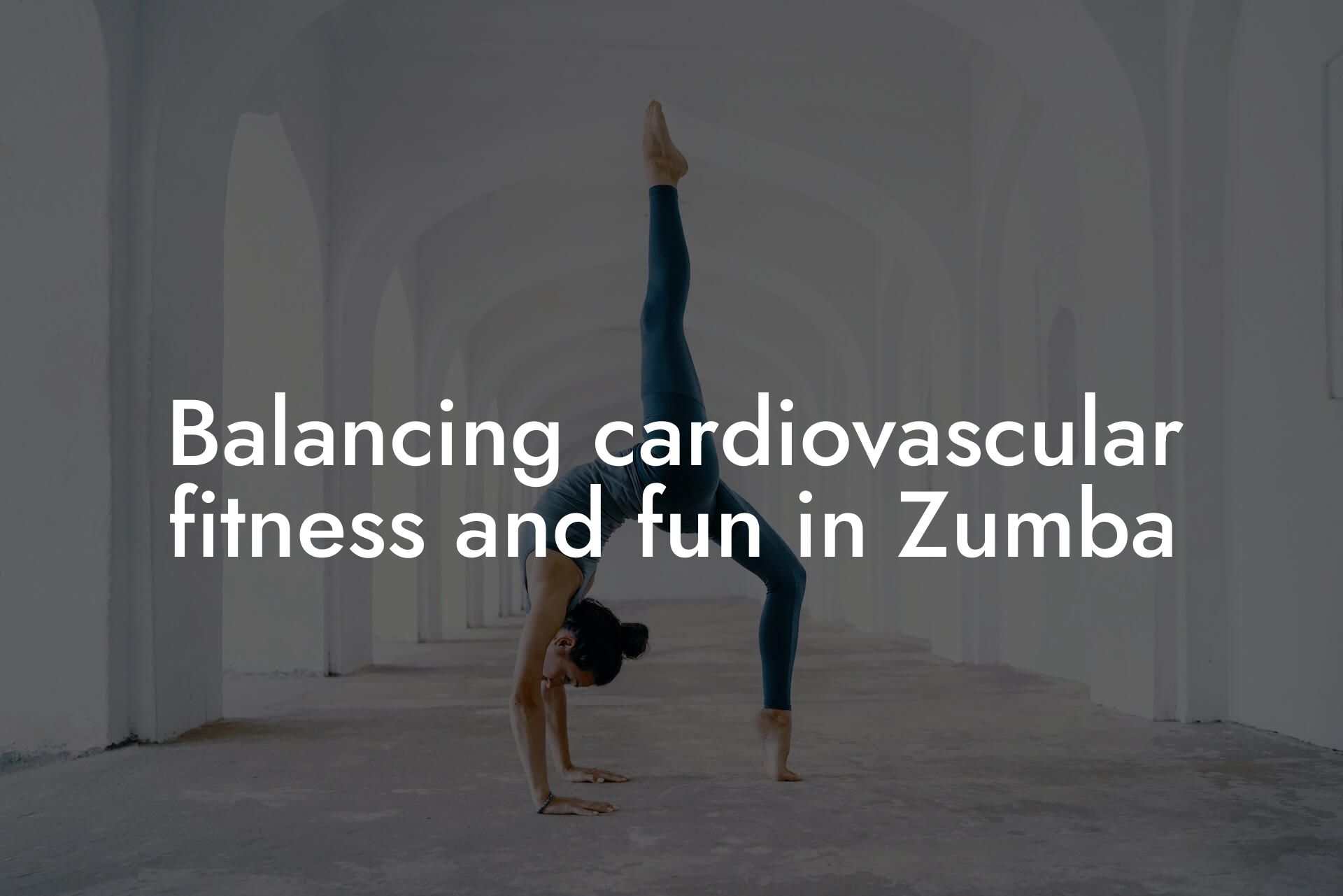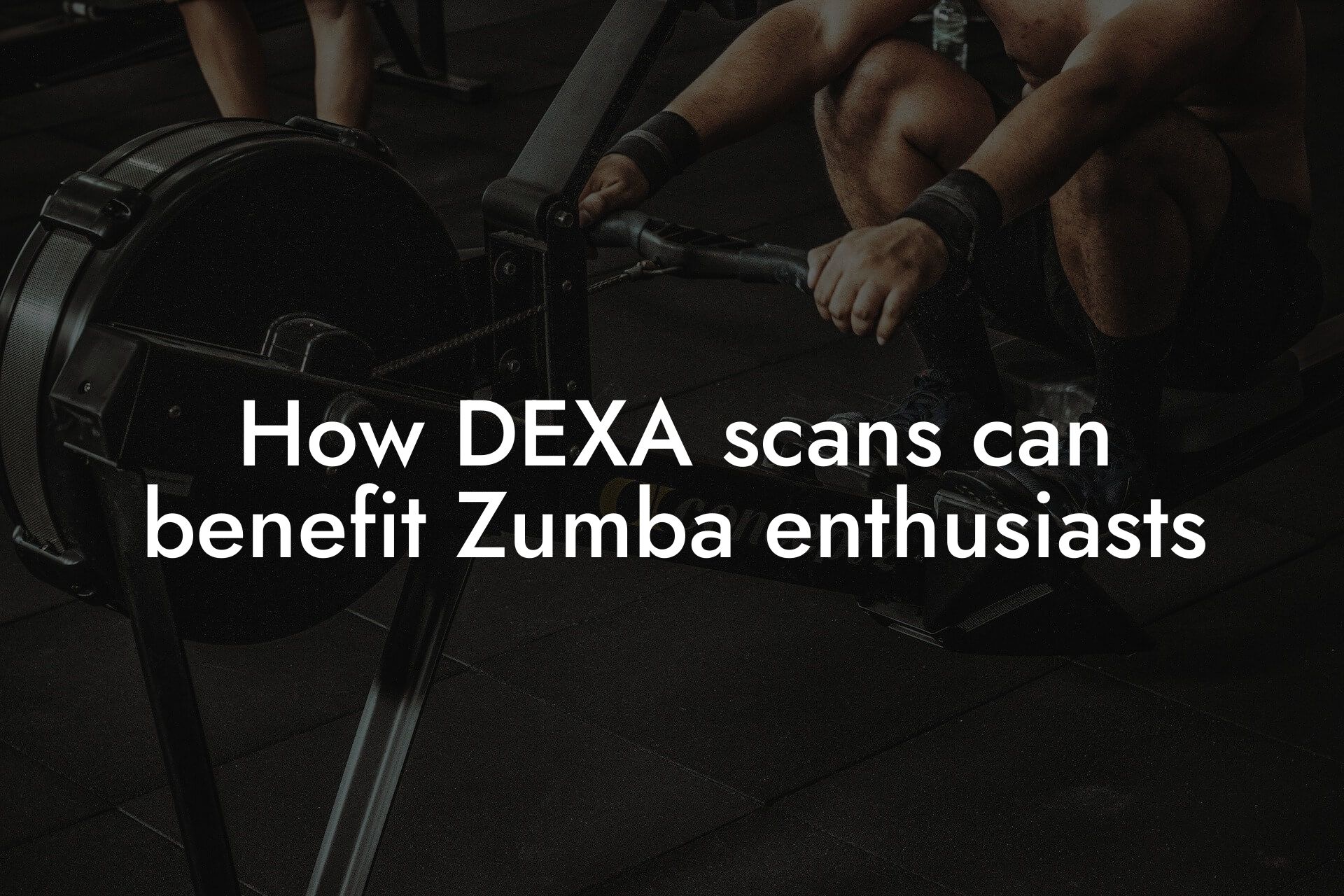As a high-earning professional, you understand the importance of maintaining a healthy and fit physique. Whether you're a busy executive or an entrepreneur, taking care of your body is essential to performing at your best. One popular way to stay active and have fun while doing it is through Zumba, a high-energy dance fitness program that combines Latin and international music with aerobic exercise. However, have you ever wondered how your body composition affects your Zumba performance? In this article, we'll delve into the impact of body composition on Zumba performance and provide you with valuable insights to take your fitness to the next level.
Table of Contents
- What is Body Composition?
- The Importance of Lean Mass in Zumba Performance
- The Impact of Body Fat on Zumba Performance
- The Role of Bone Density in Zumba Performance
- How to Optimize Your Body Composition for Zumba Performance
- How DEXA Scans Can Help Optimize Your Body Composition
- Frequently Asked Questions
What is Body Composition?
Body composition refers to the percentage of fat and lean mass in your body. It's a critical aspect of overall health and fitness, as it can affect your metabolism, energy levels, and athletic performance. A healthy body composition is typically characterized by a low percentage of body fat and a high percentage of lean mass, which includes muscle, bone, and water. In the context of Zumba, body composition plays a significant role in determining your endurance, agility, and overall performance.
The Importance of Lean Mass in Zumba Performance
Lean mass is a critical component of body composition, and it plays a vital role in Zumba performance. The more lean mass you have, the more efficient your body is at burning calories and generating energy. This is particularly important in Zumba, which requires quick movements, rapid changes of direction, and sustained energy levels. With a higher percentage of lean mass, you'll be able to perform complex dance moves with ease, maintain a high intensity throughout the class, and recover faster between sessions.
The Impact of Body Fat on Zumba Performance
On the other hand, excess body fat can hinder your Zumba performance. Carrying excess weight can make it more challenging to move quickly and efficiently, reducing your overall agility and endurance. Additionally, excess body fat can increase your risk of injury, particularly in the joints, which can lead to prolonged downtime and setbacks in your fitness journey. Furthermore, excess body fat can also affect your confidence and self-esteem, making it more challenging to enjoy the Zumba experience.
The Role of Bone Density in Zumba Performance
Bone density is another critical aspect of body composition that affects Zumba performance. As we age, our bone density naturally decreases, which can increase the risk of osteoporosis and fractures. In Zumba, high-impact movements and rapid changes of direction can put additional stress on the bones, particularly in the hips, knees, and ankles. Maintaining a healthy bone density through a balanced diet, regular exercise, and adequate calcium and vitamin D intake is essential to preventing injuries and ensuring optimal Zumba performance.
How to Optimize Your Body Composition for Zumba Performance
So, how can you optimize your body composition for Zumba performance? The key is to focus on a balanced diet and regular exercise routine that targets lean mass development and fat loss. Here are some tips to get you started:
- Incorporate strength training exercises into your routine to build lean mass and increase your metabolism.
- Focus on whole, nutrient-dense foods such as lean proteins, complex carbohydrates, and healthy fats to support muscle growth and recovery.
- Aim to lose 1-2 pounds of body fat per week through a combination of diet and exercise to achieve a healthy body composition.
- Incorporate high-intensity interval training (HIIT) into your routine to improve cardiovascular fitness and burn excess body fat.
How DEXA Scans Can Help Optimize Your Body Composition
At Tano Performance Group, we understand the importance of accurate body composition analysis in optimizing Zumba performance. That's why we offer DEXA scans, a non-invasive and highly accurate method of measuring body fat percentage, lean mass, and bone density. With a DEXA scan, you'll receive a comprehensive report outlining your body composition, which can help you:
- Identify areas for improvement and develop a targeted training program.
- Track changes in your body composition over time and adjust your diet and exercise routine accordingly.
- Optimize your Zumba performance by identifying areas where you can improve your endurance, agility, and overall fitness.
In conclusion, body composition plays a critical role in Zumba performance. By maintaining a healthy body composition through a balanced diet, regular exercise, and accurate body composition analysis, you can optimize your Zumba performance, reduce your risk of injury, and enjoy the many benefits of this high-energy dance fitness program. At Tano Performance Group, we're committed to helping you achieve your fitness goals and take your Zumba performance to the next level. Contact us today to learn more about our DEXA scan services and how they can help you achieve optimal body composition and Zumba performance.
Frequently Asked Questions
What is body composition, and why is it important for Zumba performance?
Body composition refers to the proportion of fat and lean mass in the body. It's essential for Zumba performance because it affects your overall fitness, endurance, and agility. A healthy body composition can improve your Zumba performance, reduce the risk of injury, and enhance your overall physical appearance.
How does body fat percentage affect Zumba performance?
Excess body fat can negatively impact Zumba performance by reducing endurance, increasing fatigue, and decreasing agility. A higher body fat percentage can also put additional stress on joints, increasing the risk of injury. Maintaining a healthy body fat percentage through a balanced diet and regular exercise can improve Zumba performance and overall health.
What is the ideal body fat percentage for Zumba dancers?
The ideal body fat percentage for Zumba dancers varies depending on age, sex, and fitness goals. Generally, a body fat percentage between 18-24% for women and 10-17% for men is considered healthy and optimal for Zumba performance.
How does lean muscle mass affect Zumba performance?
Lean muscle mass is essential for Zumba performance as it provides the strength, power, and endurance needed to execute complex movements and maintain energy levels throughout the class. Having a higher percentage of lean muscle mass can improve Zumba performance, increase calorie burn, and enhance overall physical fitness.
What is the relationship between bone density and Zumba performance?
Bone density is crucial for Zumba performance as it affects the body's ability to withstand the impact and stress of high-energy movements. Low bone density can increase the risk of osteoporosis and fractures, making it essential to maintain a healthy bone density through a balanced diet, regular exercise, and proper nutrition.
How can I measure my body composition?
There are several ways to measure body composition, including dual-energy X-ray absorptiometry (DXA), hydrostatic weighing, and skinfold measurements. You can also use body fat calipers or bioelectrical impedance analysis (BIA) devices for a more convenient and affordable measurement.
What is the impact of body composition on Zumba injury risk?
Body composition plays a significant role in Zumba injury risk. Excess body fat can increase the risk of joint injuries, while low lean muscle mass can lead to muscle strains and fatigue. Maintaining a healthy body composition through a balanced diet and regular exercise can reduce the risk of injury and improve overall Zumba performance.
How can I improve my body composition for better Zumba performance?
To improve body composition for better Zumba performance, focus on a balanced diet that includes plenty of protein, healthy fats, and complex carbohydrates. Regular exercise, including strength training and cardio, can also help improve body composition and enhance Zumba performance.
What role does nutrition play in body composition and Zumba performance?
Nutrition plays a critical role in body composition and Zumba performance. A balanced diet that includes plenty of protein, healthy fats, and complex carbohydrates can help improve body composition, increase energy levels, and enhance Zumba performance.
How can I incorporate strength training into my Zumba routine?
Incorporating strength training into your Zumba routine can help improve lean muscle mass, increase endurance, and enhance overall Zumba performance. Focus on exercises that target the core, legs, and glutes, such as squats, lunges, and deadlifts.
What are some effective cardio exercises to improve Zumba performance?
In addition to Zumba, incorporating other cardio exercises such as running, cycling, or swimming can help improve cardiovascular endurance, increase calorie burn, and enhance overall Zumba performance.
How often should I practice Zumba to see improvements in body composition?
To see improvements in body composition, it's recommended to practice Zumba at least 2-3 times per week, with a minimum of 30 minutes per session. Consistency and frequency are key to achieving improvements in body composition and Zumba performance.
Can I still improve my Zumba performance if I'm not naturally athletic?
Absolutely! While natural athleticism can be beneficial, it's not a requirement for improving Zumba performance. Focus on developing a consistent practice routine, listening to your body, and making adjustments as needed. With patience and dedication, anyone can improve their Zumba performance and achieve their fitness goals.
How does age affect body composition and Zumba performance?
Age can affect body composition and Zumba performance, as natural declines in muscle mass and bone density can occur with age. However, regular exercise and a balanced diet can help mitigate these effects and improve overall Zumba performance, regardless of age.
What are some common mistakes Zumba dancers make that can negatively impact body composition?
Common mistakes Zumba dancers make that can negatively impact body composition include overtraining, poor nutrition, and inadequate recovery time. It's essential to listen to your body, fuel your body with a balanced diet, and allow for adequate recovery time to avoid burnout and injury.
How can I stay motivated to continue improving my Zumba performance and body composition?
To stay motivated, set specific and achievable goals, find a workout buddy or accountability partner, and celebrate small victories along the way. Also, focus on how Zumba makes you feel, rather than just the physical results, to maintain a positive and motivated mindset.
What role does sleep play in body composition and Zumba performance?
Sleep plays a critical role in body composition and Zumba performance, as it allows for muscle recovery, repair, and growth. Aim for 7-9 hours of sleep per night to support optimal body composition and Zumba performance.
How can I balance Zumba with other fitness activities to improve overall body composition?
To balance Zumba with other fitness activities, focus on creating a well-rounded fitness routine that includes a mix of cardio, strength training, and flexibility exercises. Allow for adequate recovery time and listen to your body to avoid burnout and injury.
What are some effective stress-reduction techniques to improve Zumba performance and body composition?
Effective stress-reduction techniques to improve Zumba performance and body composition include meditation, deep breathing, and yoga. These techniques can help reduce cortisol levels, improve mood, and enhance overall physical performance.
How can I track my progress and stay accountable in my Zumba journey?
To track progress and stay accountable, take progress photos, measurements, and track workout metrics such as distance, speed, and heart rate. Share your goals and progress with a friend or accountability partner to stay motivated and on track.
What are some common myths about body composition and Zumba performance?
Common myths about body composition and Zumba performance include the idea that you need to be naturally thin to be good at Zumba, or that Zumba is only for young people. These myths are debunked by the fact that Zumba is a low-impact, accessible form of exercise that can be modified to suit any fitness level or age.
How can I modify Zumba to suit my fitness level and body composition?
To modify Zumba to suit your fitness level and body composition, focus on listening to your body and making adjustments as needed. Take breaks when needed, modify movements to reduce impact, and focus on proper form and technique to avoid injury.
What are some effective ways to stay hydrated during and after Zumba?
To stay hydrated during and after Zumba, drink plenty of water before, during, and after class, and avoid sugary drinks and caffeine. Aim to drink at least 8-10 glasses of water per day to support optimal hydration and physical performance.
Here are some related articles you might love...
- Balancing cardiovascular fitness and fun in Zumba
- Nutrition strategies for sustained energy in Zumba classes
- How DEXA scans can benefit Zumba enthusiasts
- Maintaining muscle tone and endurance in Zumba
- The role of Zumba in weight loss and overall health
- Recovery techniques for Zumba dancers after intense sessions
- Strength training tips to complement your Zumba routine
- Reducing body fat for improved stamina and flexibility in Zumba
- Bone density and its role in Zumba performance
Zak Faulkner
Zak Faulkner is a leading authority in the realm of physical health and body composition analysis, with over 15 years of experience helping professionals optimise their fitness and well-being. As one the experts behind Tano Performance Group, Zak has dedicated his career to providing in-depth, science-backed insights that empower clients to elevate their physical performance and overall health.
With extensive knowledge of DEXA technology, Zak specializes in delivering comprehensive body assessments that offer precise data on body fat, muscle mass, bone density, and overall physique. His expertise enables individuals to make informed decisions and achieve their fitness goals with accuracy and confidence. Zak’s approach is rooted in a deep understanding of human physiology, combined with a passion for helping clients unlock their full potential through personalised strategies.
Over the years, Zak has earned a reputation for his commitment to excellence, precision, and client-focused service. His guidance is trusted by top professionals who demand the best when it comes to their health. Whether advising on fitness programs, nutritional strategies, or long-term wellness plans, Zak Faulkner’s insights are a valuable resource for anyone serious about taking their health and fitness to the next level.
At Tano Performance Group, Zak continues to lead our Content Team revolutionising how professionals approach their physical health, offering unparalleled expertise that drives real results.




